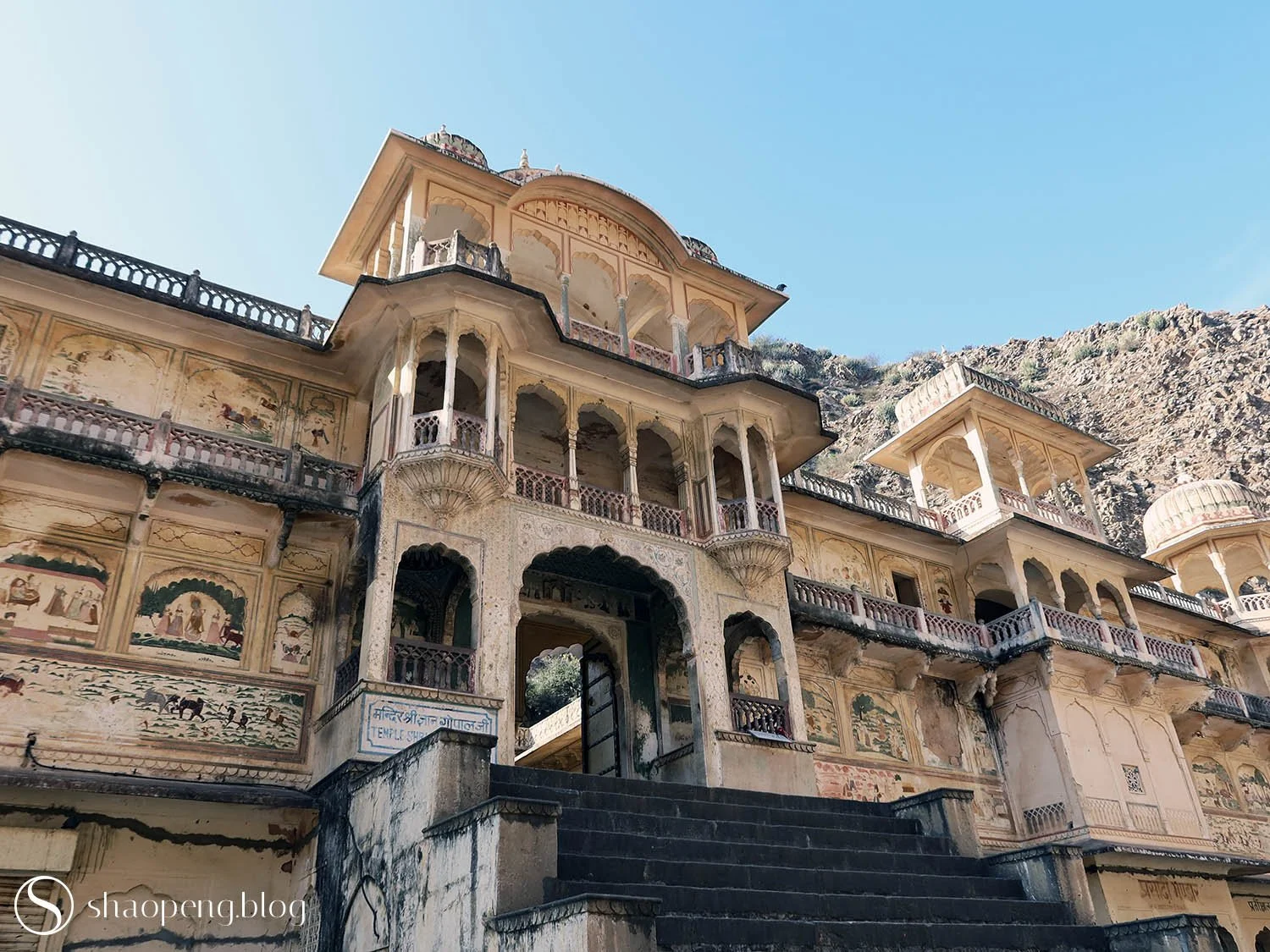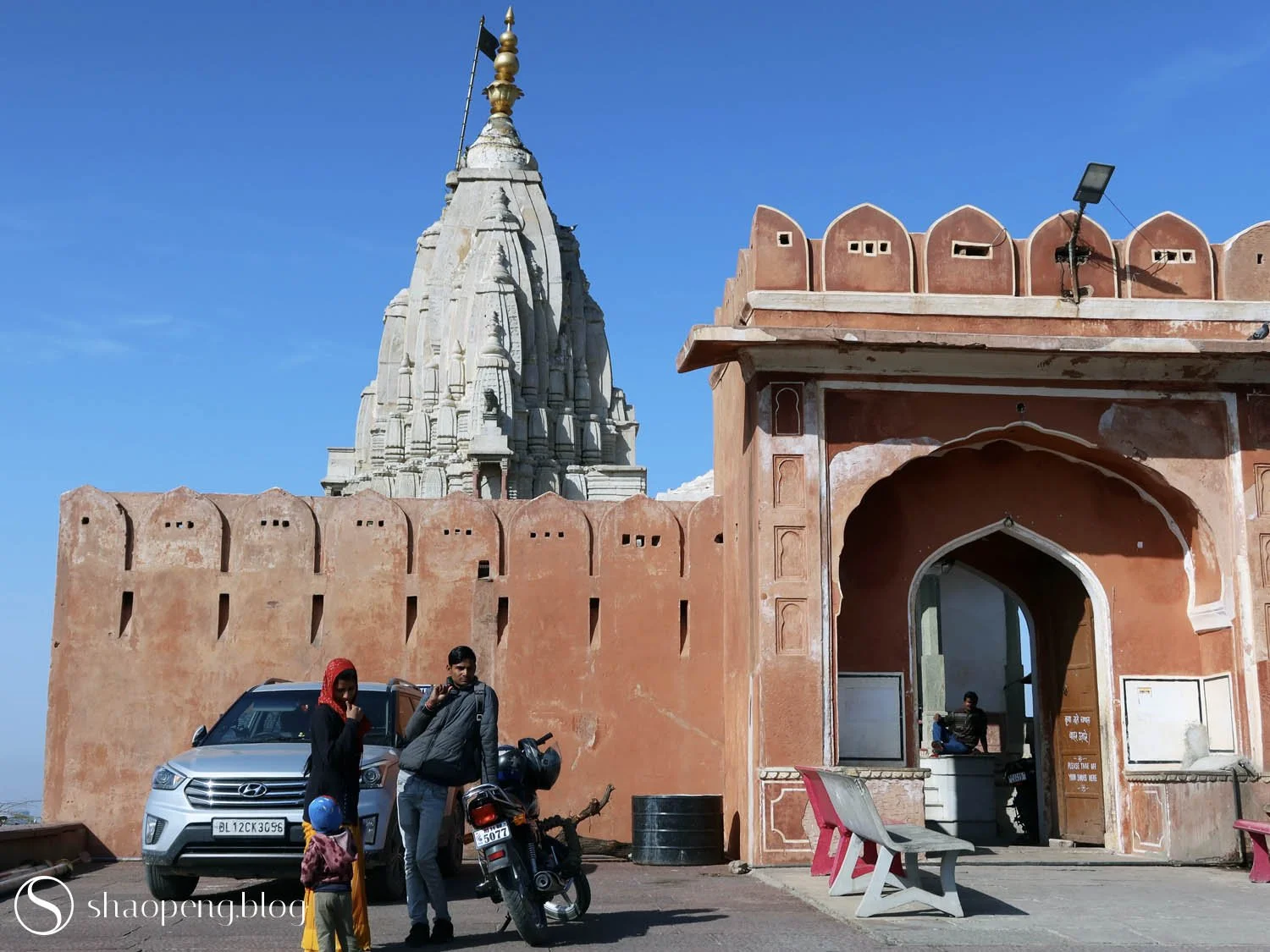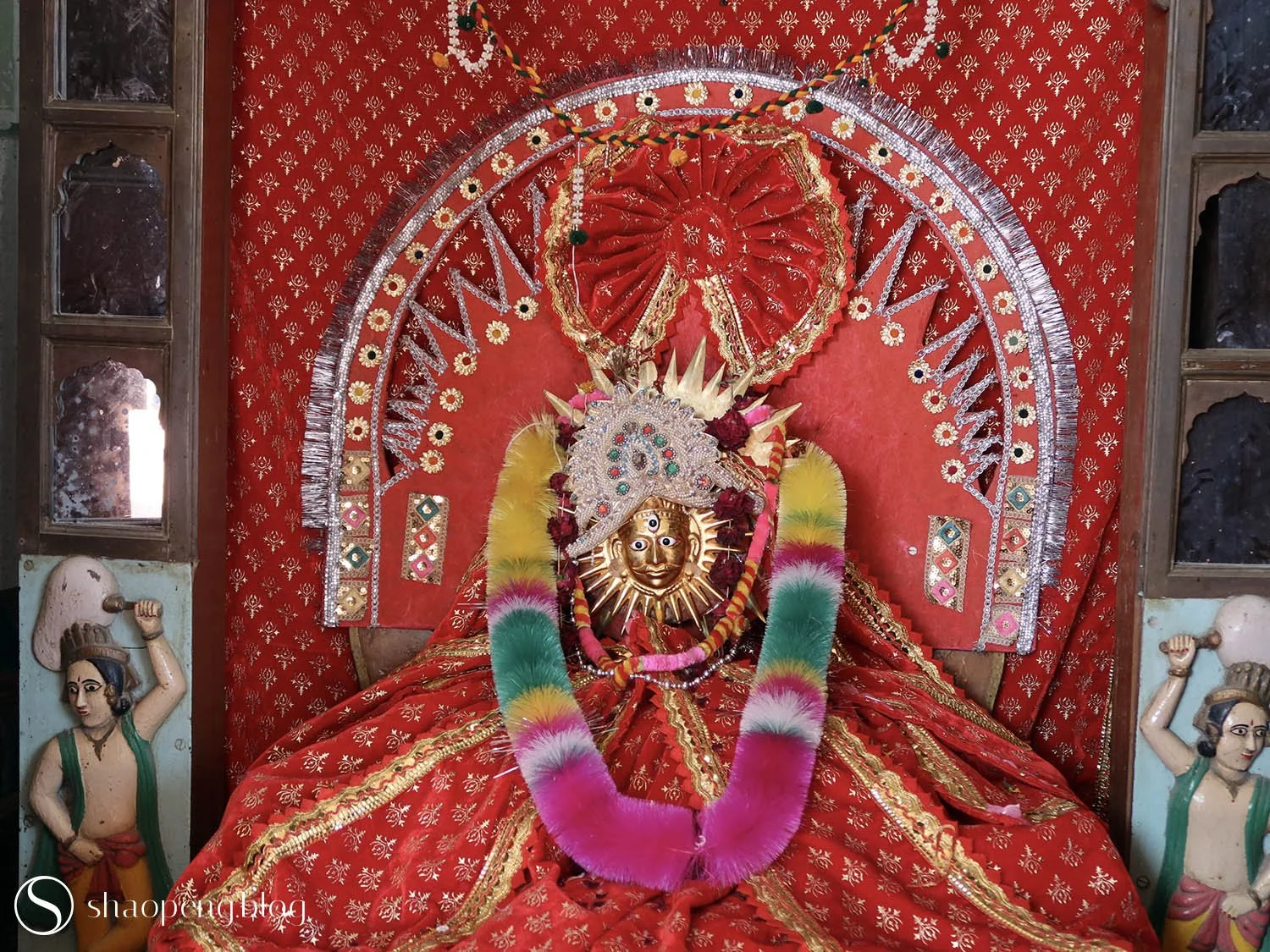Wander in India: Galtaji
About a half-hour drive from Jaipur's city centre lies Galtaji, an ancient pilgrimage site that can lead you to the ultimate reality, if you seek it.
Sense of Wander: ★★★★★
A pair of monkeys can be seen basking in the sun next to the Lower Galta Kund in Galtaji, Jaipur.
JAIPUR, India — Jaipur, the capital of Rajasthan, is one of the destinations on India’s Golden Triangle itinerary. Affectionately known as “The Pink City,” this nickname dates back to 1876 when Maharaja Ram Singh (reigned 1835-1880), in anticipation of Queen Victoria’s visit, bathed most of the city’s buildings in warm pink hues — a heartfelt symbol of hospitality.
Amidst the allure of Jaipur’s rosy cityscape and bustling bazaars brimming with exotic treasures, I stumbled upon a hidden gem that defined my Jaipur experience: the Galtaji.
Tucked away just a half-hour’s drive from Jaipur’s iconic Hawa Mahal, this sacred site revealed a story of its own, enriching my stay with its mystical charm and spiritual resonance.
Tales and myths of Galtaji
Nestled in a narrow crevice between two hills, Galtaji is an ancient Hindu pilgrimage site that exudes a serene aura. Within this complex, there are several water tanks known as kund and numerous temples, making it one of the most significant pilgrimage sites in the Hindu religion.
Upon entering the Galtaji complex, most visitors — regardless of their beliefs and backgrounds — would experience an immediate uplift of energy. This rejuvenating sensation is heightened by the temple’s breathtaking natural surroundings.
Under the open sky, far from the city’s hustle and bustle, attentive ears catch the rhythmic mantras chanted by priests resonating through the temple space. These sacred sounds create a profound sense of energy and tranquility, enriching the experience for all who visit this sacred sanctuary.
Galtaji, an ancient pilgrimage site consisting of several water tanks and Hindu temples, is surrounded by natural beauty.
While some might view these feelings as merely personal, wait until you hear this intriguing local lore: according to some, Galtaji was named after the revered Rishi Galav, an enlightened sage who performed penance at this very location for an astonishing 60,000 years.
Legend has it that the gods were immensely pleased by his devotion, leading them to bless the area with an eternal source of holy water. This sacred water springs naturally from high on the hill, flowing downward to fill a series of sacred kund or water tanks where pilgrims and devotees partake in cleansing rituals and bathe in reverence.
In fact, the image of the Lower Galta Kund is what initially draws most visitors — including myself — to Galtaji. But I must say that this place has so much more to offer beyond this captivating sight.
Like a Hindu pilgrim…
Passing through the ticketed entrance of Galtaji, I walked along a street flanked by Hindu temples. It didn't take long before I reached a significant point in my journey, standing between the Shri Gyan Gopal Ji Temple and the larger Shri Galta Peeth Temple, a retreat for Hindu ascetics since the early 15th century.
Opting for the Shri Gyan Gopal Ji Temple, I turned left and climbed a flight of stairs leading to its entrance, stepping into a sunlit courtyard. Being unfamiliar with Hindu temple customs, I wandered around cautiously barefoot. Before long, I was warmly greeted by a temple priest who guided me to an altar adorned with mango-coloured cloth hand-printed with blue and red flowers, upon which carefully arranged religious statues rested.
The Shri Gyan Gopal Ji Temple is among the Hindu temples found inside the Galtaji complex, nestled on the outskirts of Jaipur.
After a brief introduction, the priest initiated the ritual by applying a sandalwood-paste tilak to my forehead with his finger. Placed directly on my ajna chakra, or third-eye chakra, it felt as though an invisible yet powerful affiliation was forged between my physical body, soul, and the divine presence worshipped in the temple.
Then he wrapped a red-yellow coloured thread around my wrist, reciting a Sanskrit mantra as he tied it in place. As I later learned, this thread is known as kavala or mauli and is believed to provide protection. It was the first kavala I had ever received in my life.
The priest then anointed the back of my hands with jasmine fragrance. The sweet scent of jasmine is associated with Kama, the Hindu god of erotic love and desire. This series of simple yet profound rituals seemed to awaken something within me, almost without me realising it.
“This series of simple yet profound rituals seemed to awaken something within me, almost without me realising it.”
Inside the Shri Gyan Gopal Ji Temple, the altar is adorned with a selection of Hindu deities.
I received my first kalava at the Shri Gyan Gopal Ji Temple.
After leaving the Hindu temple behind, I made my way towards the Lower Galta Kund, envisioning how this place must have once been filled with devotees seeking purification in its holy waters. However, the main kund now lay empty, with only a smaller one to the side where a couple of young men were enjoying the water under the sun.
On the road, I was sometimes accompanied by monkeys. The presence of hundreds of macaques has earned the place the nickname “Monkey Temple.”
Continuing uphill, I was met with an unexpected ascent that felt like a journey without a clear destination, especially in the sweltering heat. Like a pilgrim navigating the challenges of the road or simply a person enduring life’s countless trials, the hike came to a pause when I reached a small community. There were some smaller Hindu temples, but I didn't linger as villagers were busy paving the main road.
Looking out from the entrance gate of the Shri Gyan Gopal Ji Temple provides a stunning view of the Shri Galta Peeth Temple.
A series of stairs next to the Lower Galta Kund marked the beginning of my pilgrimage.
As I made my way uphill, I encountered a group of villagers paving the road, which made the hike much easier.
My encounter with a sadhu made my pilgrimage feel more real than ever.
Finally, a temple perched atop the hill came into view. Continuing on my way, I encountered a sadhu, his white robe covered with a saffron-coloured cloth on top, printed with images of Hindu deities. He was the first ascetic I had encountered during my entire trip in India. At first, I was hesitant whether to greet due to uncertainty about their customs. But I was met with a surprise. As I passed by, the sadhu broke into a warm “namaste” (a customary Hindu greeting), and joyfully, I reciprocated in kind, forming a connection with this once-in-a-life-time stranger in our shared karmic cycle.
Before long, I reached the temple at the hilltop — a pink stone temple dedicated to Surya, the Sun God, hence known as the Temple of the Sun. Standing before this place of worship, I was filled with awe and shock because this exact scene, with the temple and the people standing outside, mirrored a vivid dream I had experienced before. This marked my second déjà vu moment in India.
After taking a few deep breaths, I entered the sanctuary and was greeted by a woman seated at the entrance to the altar, who applied another tilak on my forehead, this time using white sandalwood powder.
Standing outside the Temple of the Sun, I was stunned by this moment of déjà vu.
An intriguing statue of Surya is found inside the Temple of the Sun God at the Galtaji complex.
The viewing deck around the back of the Temple of the Sun offered a breathtaking panorama of Jaipur
As I wandered through this tiny temple, I discovered that the viewing deck around the back of this sanctuary offered a breathtaking panorama of Jaipur, along with the fortresses and fortifications I had visited over the last couple of days.
Viewing the city from this perspective allowed me to appreciate Jaipur’s beauty. Even from this hilltop location, the sounds of the supposedly distant city traffic below reminded me of the interconnectedness of all things and places, regardless of where I am.
And what began as a tourist visit turned into a pilgrimage. The sweat and hardships endured along the road were rewarded not only with this breathtaking view but also the realisation that the city didn’t appear as pink as I had expected — as if reaffirming that everything in front of us may be mere illusion or, as they say in Sanksrit, māyā.
Near Galtaji’s parking lot, an Indian bull basks in the warm sunlight in the middle of the road.
Tips for wanderer — I suggest that anyone visiting Galtaji spend their entire morning here and plan their hike before the scorching noon sun.













